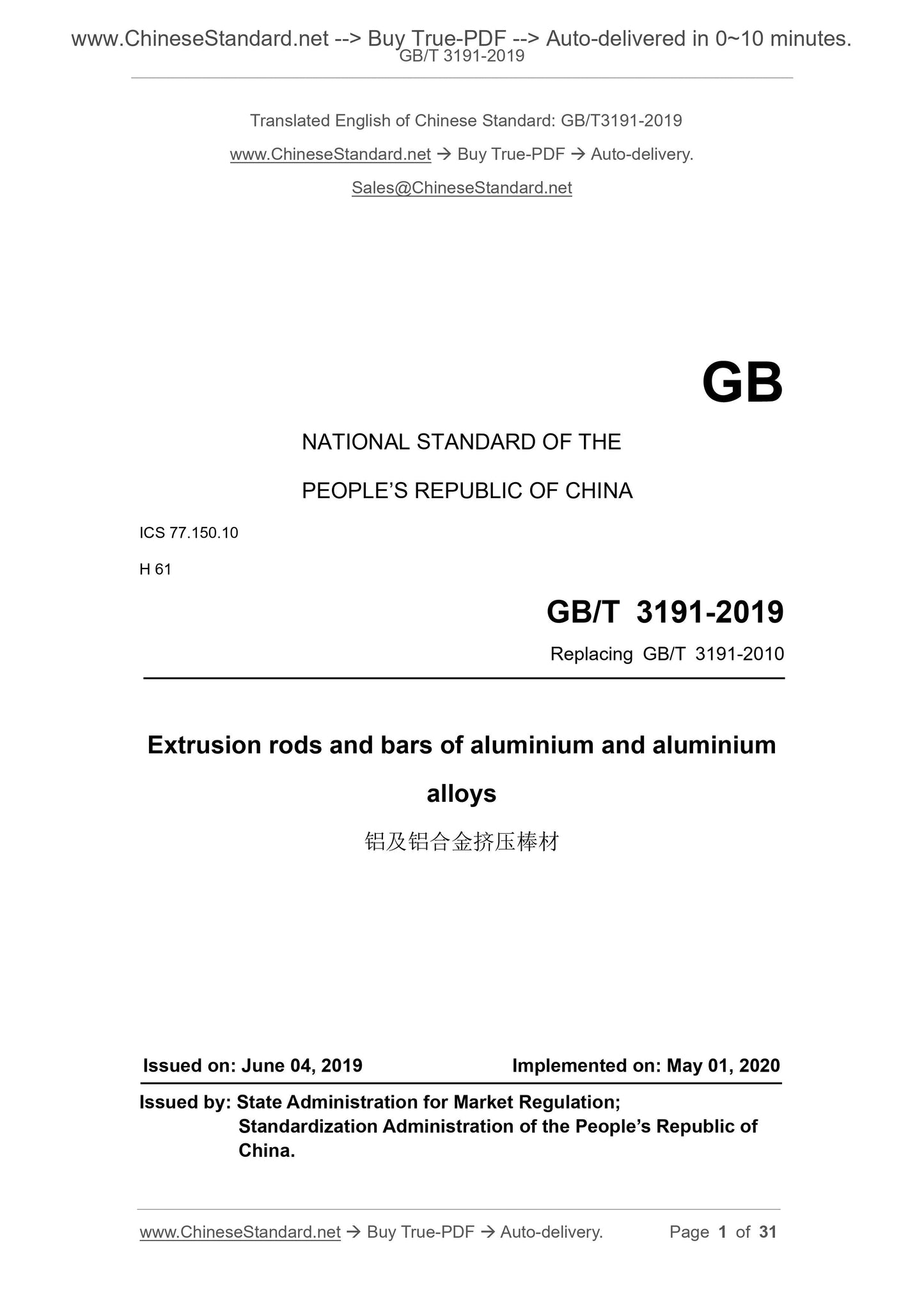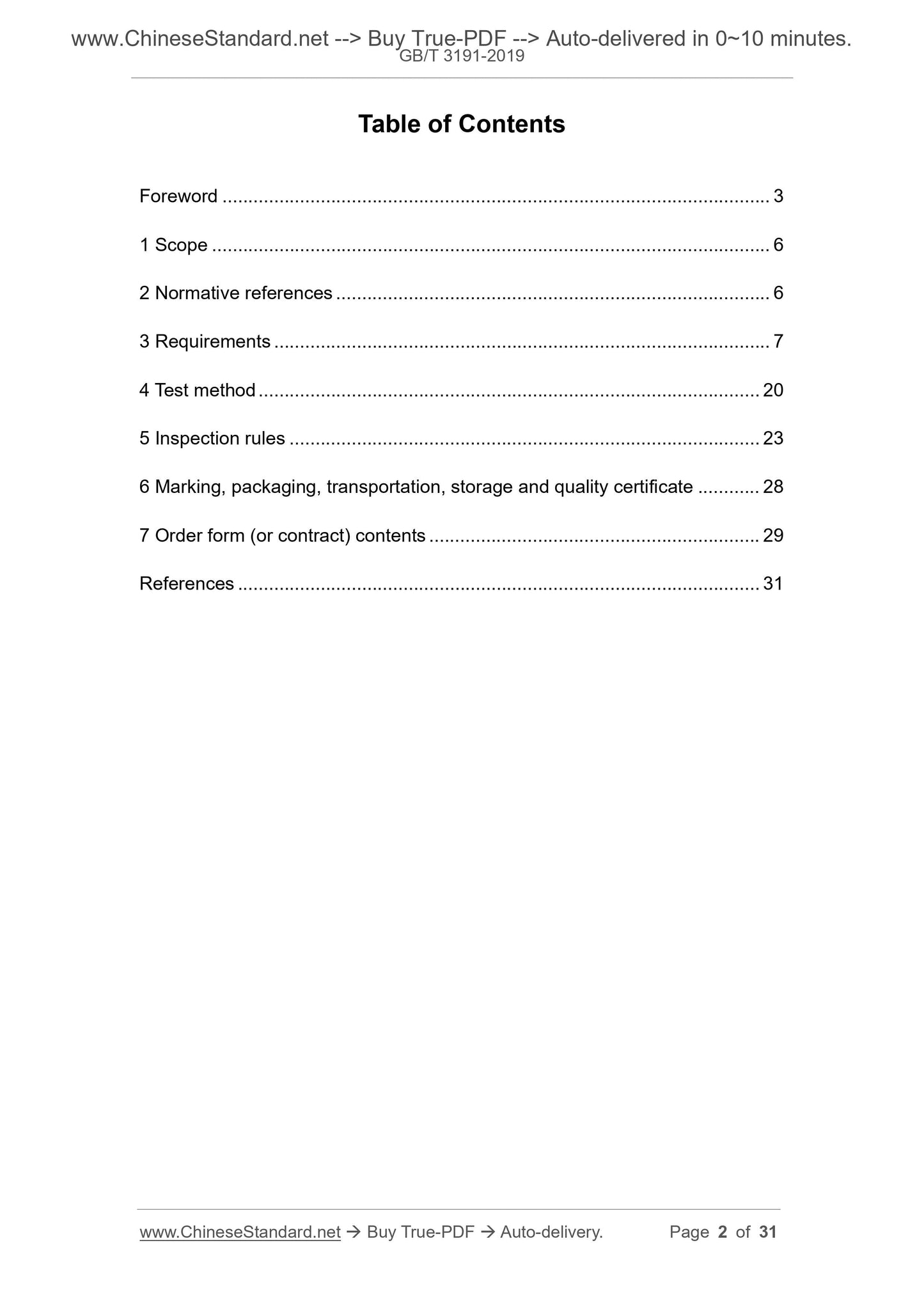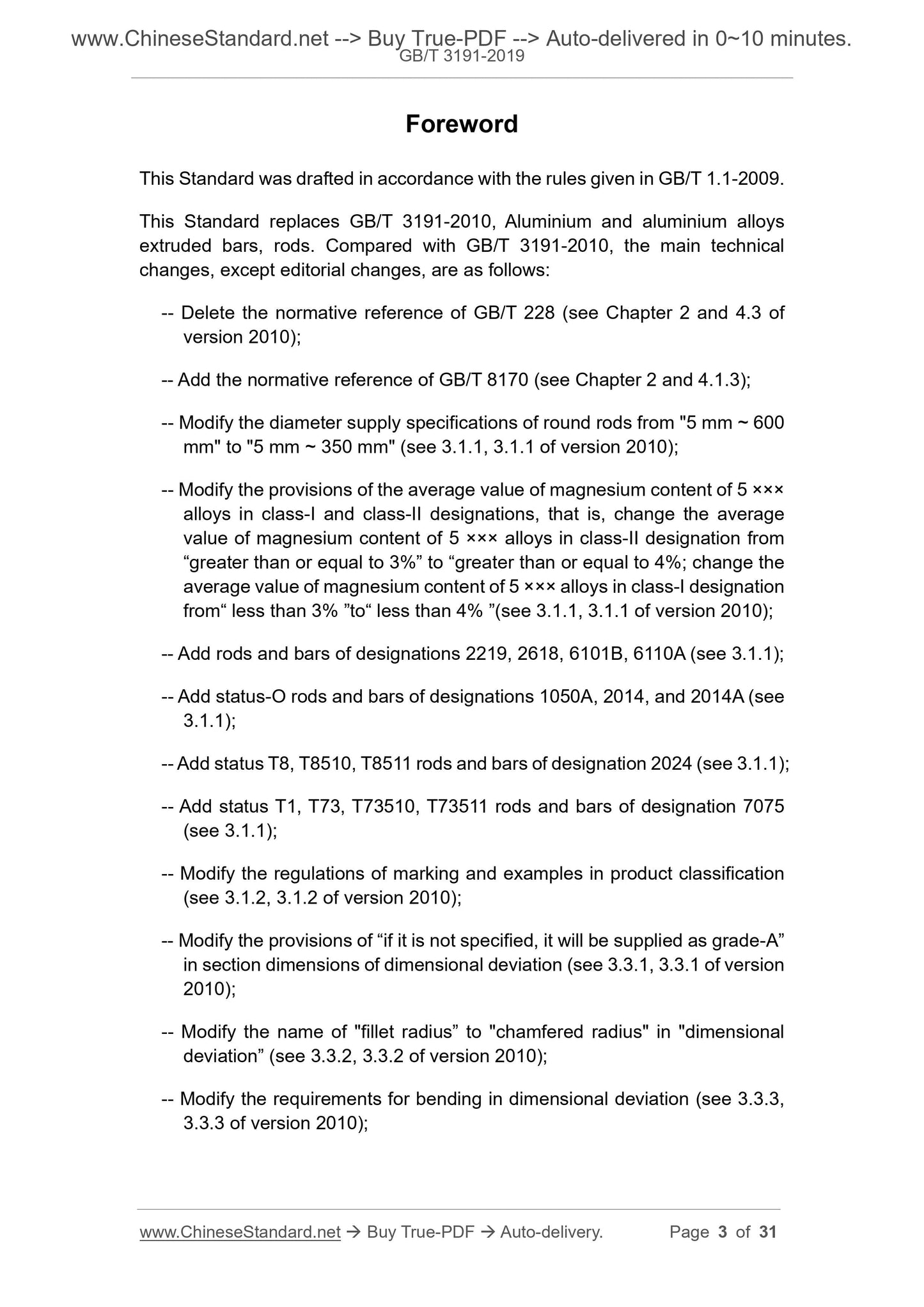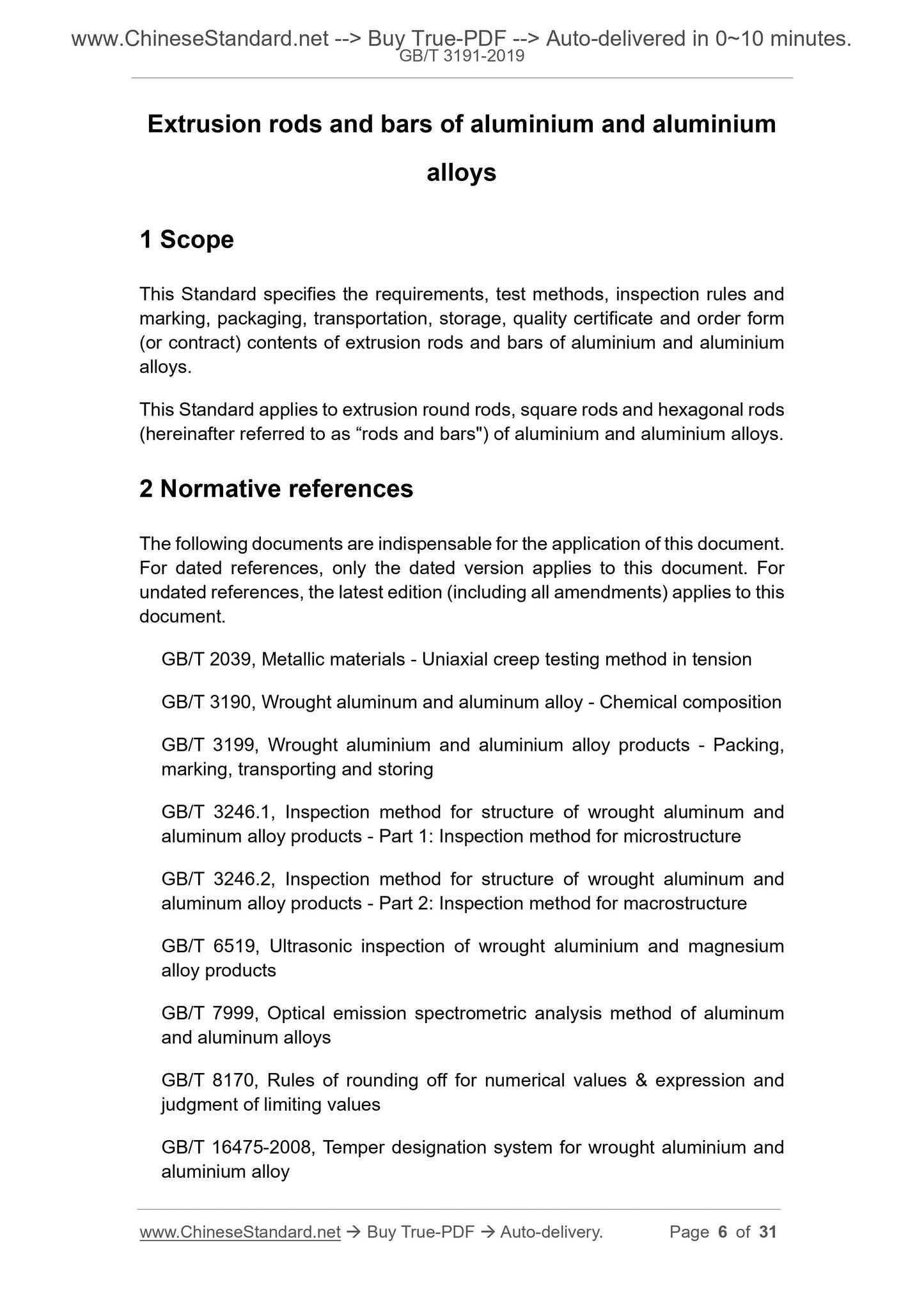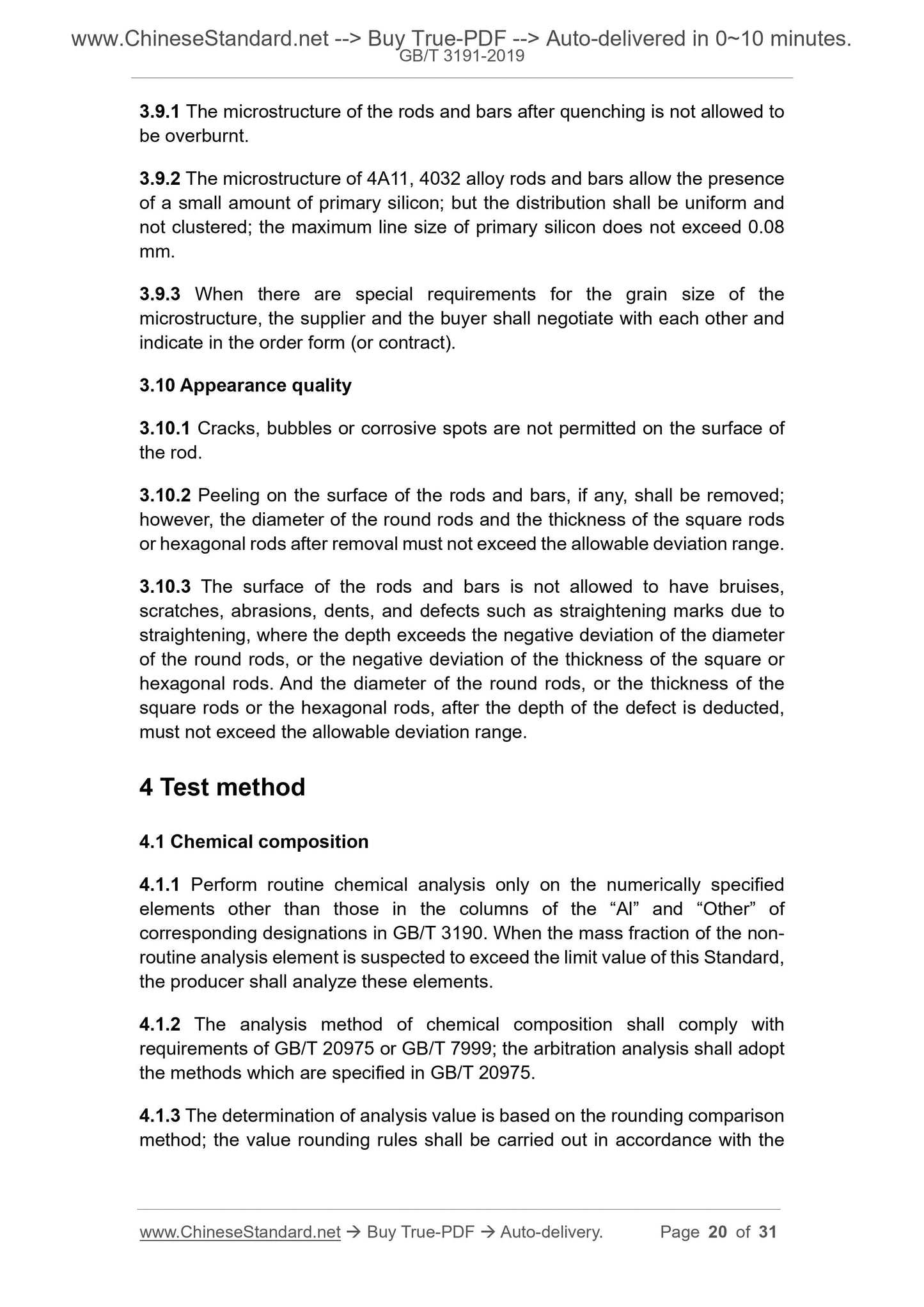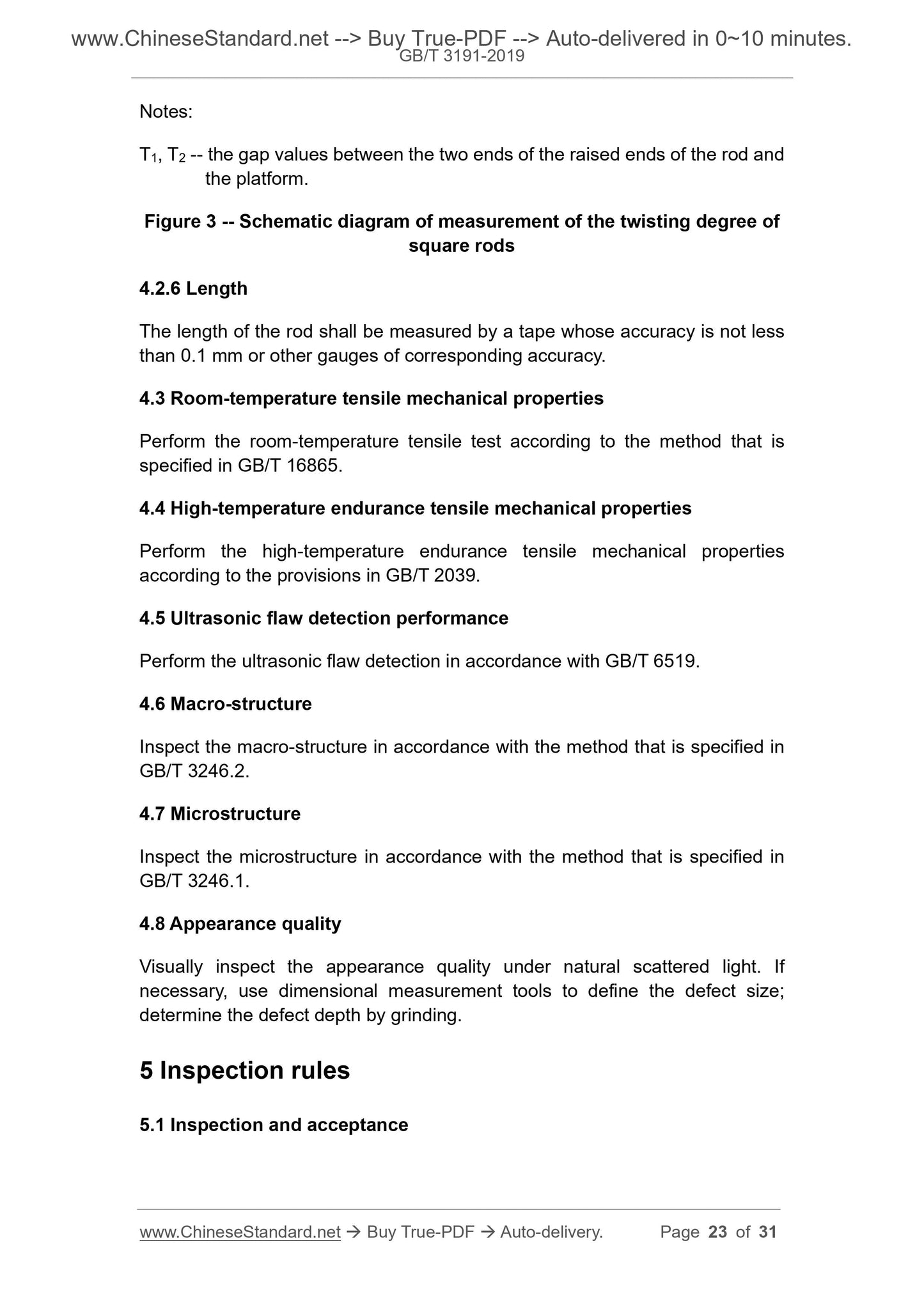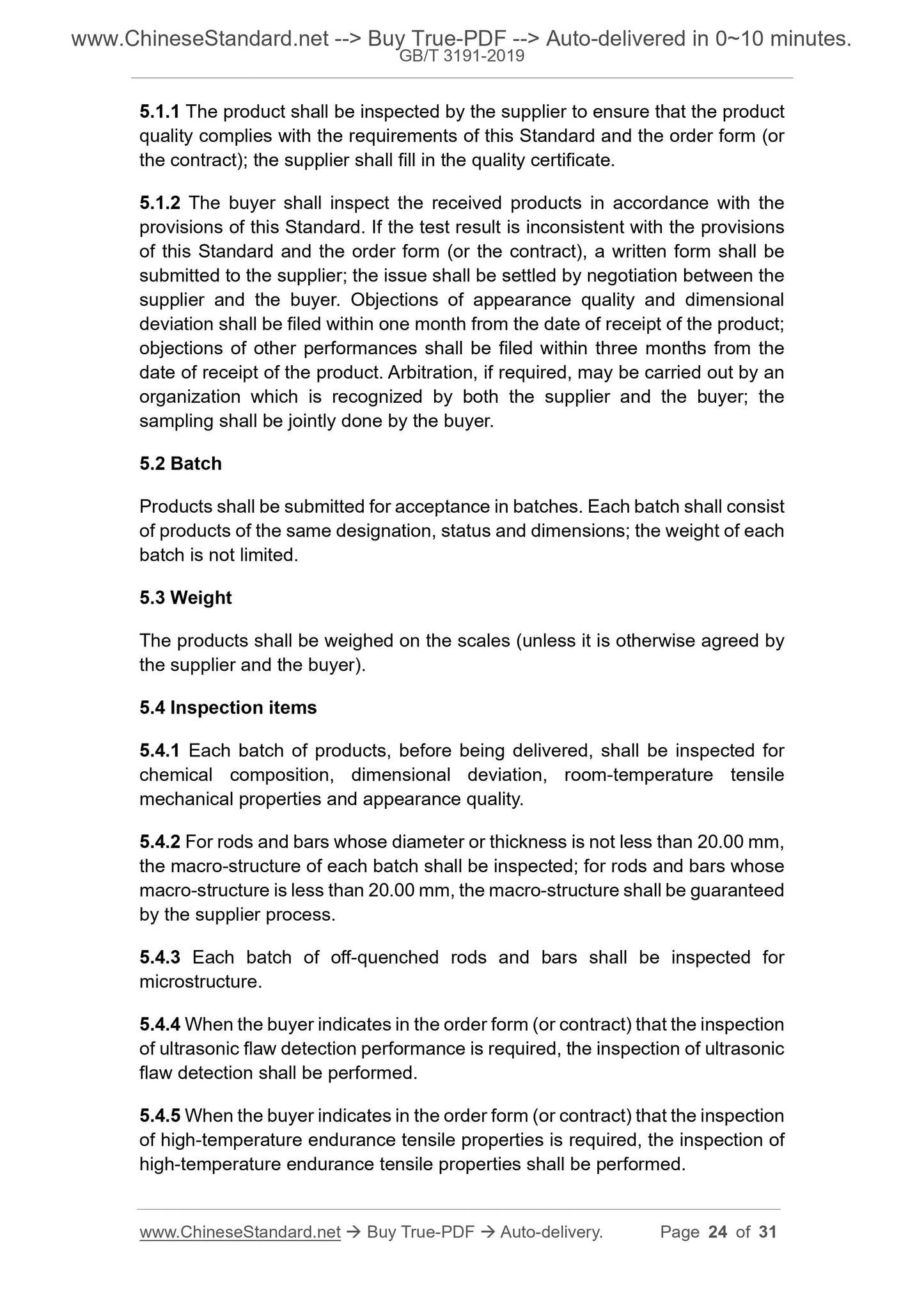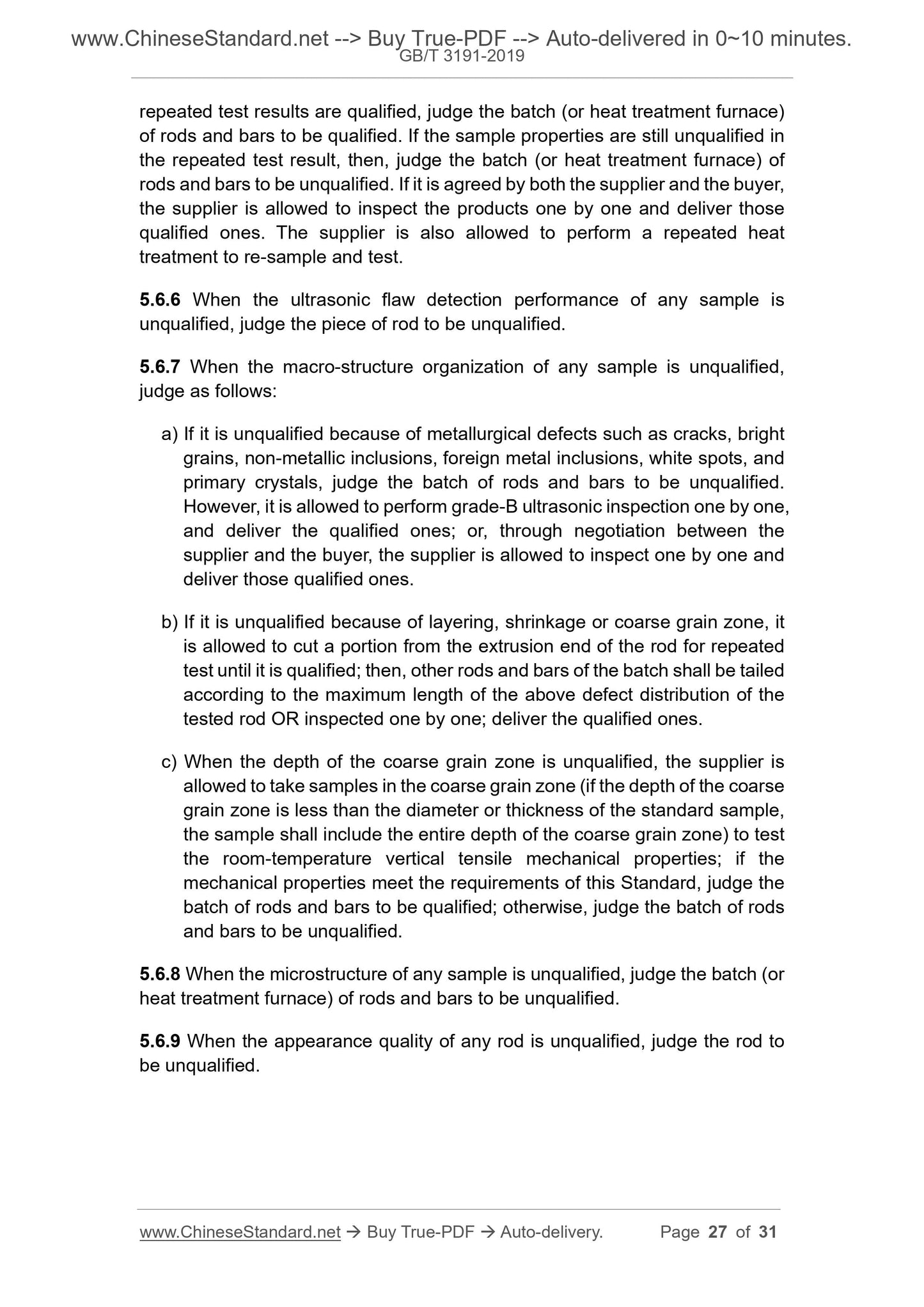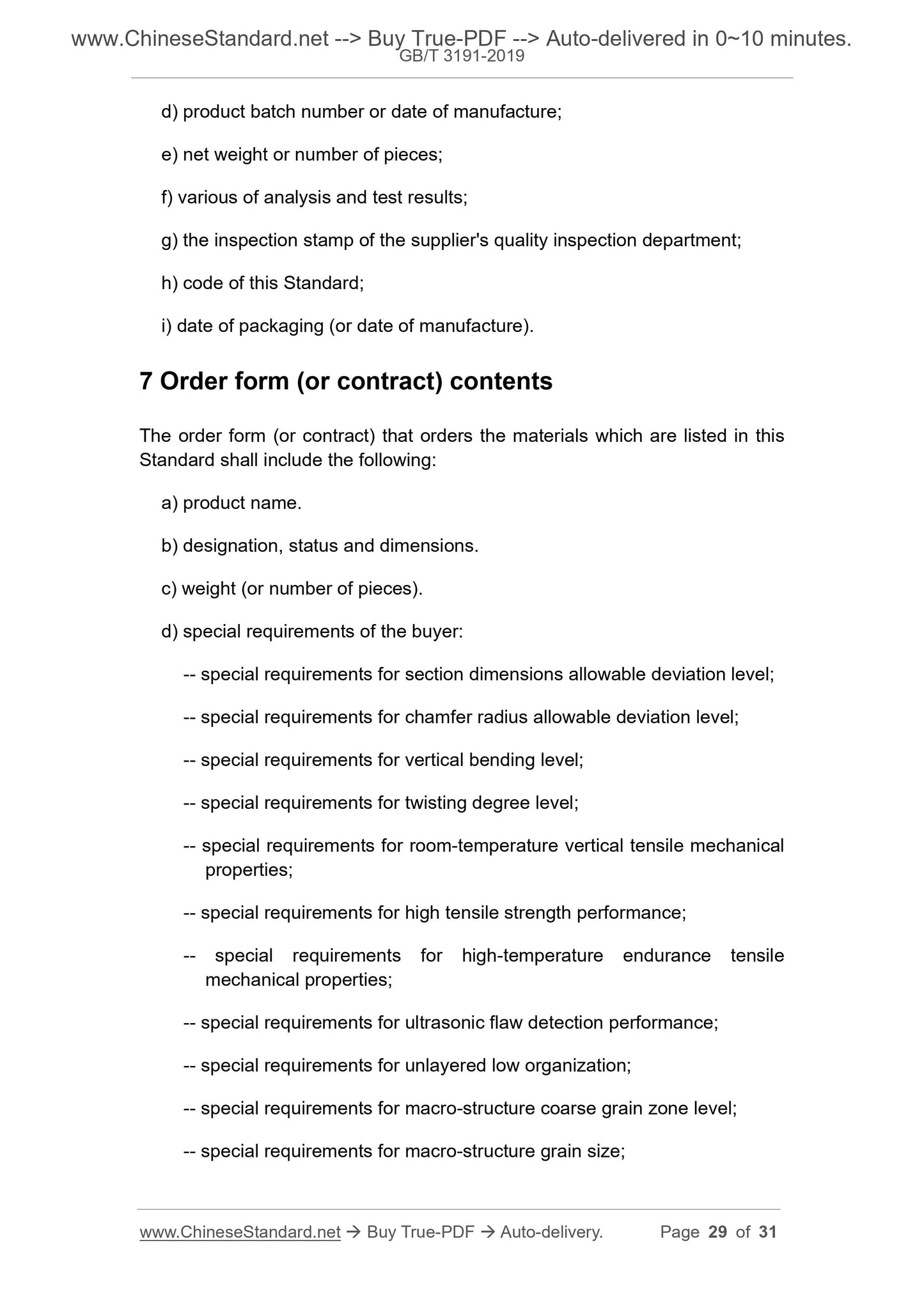1
/
of
9
www.ChineseStandard.us -- Field Test Asia Pte. Ltd.
GB/T 3191-2019 English PDF (GB/T3191-2019)
GB/T 3191-2019 English PDF (GB/T3191-2019)
Regular price
$165.00
Regular price
Sale price
$165.00
Unit price
/
per
Shipping calculated at checkout.
Couldn't load pickup availability
GB/T 3191-2019: Extrusion rods and bars of aluminium and aluminium alloys
Delivery: 9 seconds. Download (and Email) true-PDF + Invoice.Get Quotation: Click GB/T 3191-2019 (Self-service in 1-minute)
Newer / historical versions: GB/T 3191-2019
Preview True-PDF
Scope
This Standard specifies the requirements, test methods, inspection rules andmarking, packaging, transportation, storage, quality certificate and order form
(or contract) contents of extrusion rods and bars of aluminium and aluminium
alloys.
This Standard applies to extrusion round rods, square rods and hexagonal rods
(hereinafter referred to as “rods and bars") of aluminium and aluminium alloys.
Basic Data
| Standard ID | GB/T 3191-2019 (GB/T3191-2019) |
| Description (Translated English) | Extrusion rods and bars of aluminium and aluminium alloys |
| Sector / Industry | National Standard (Recommended) |
| Classification of Chinese Standard | H61 |
| Classification of International Standard | 77.150.10 |
| Word Count Estimation | 22,260 |
| Date of Issue | 2019-06-04 |
| Date of Implementation | 2020-05-01 |
| Issuing agency(ies) | State Administration for Market Regulation, China National Standardization Administration |
Share
